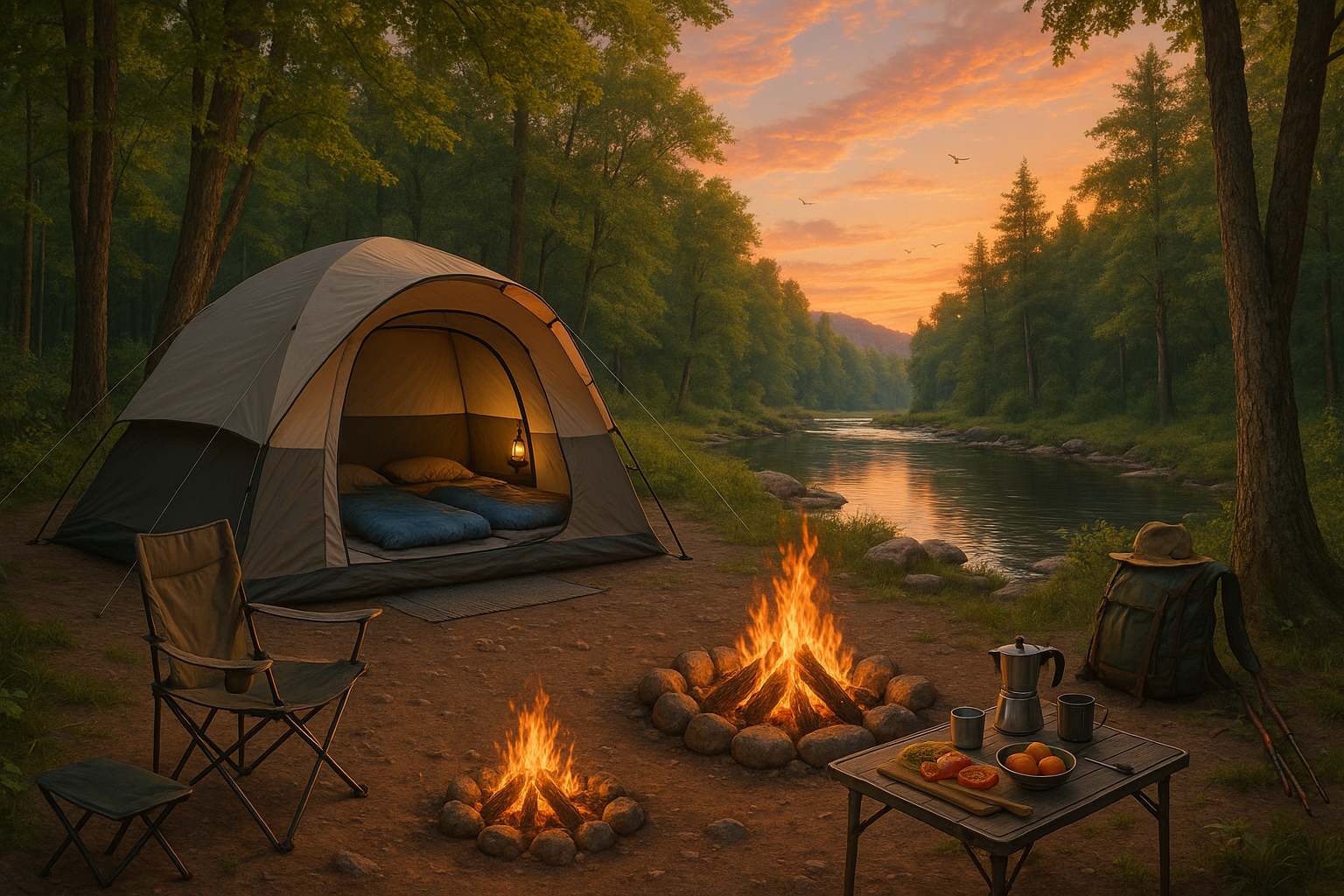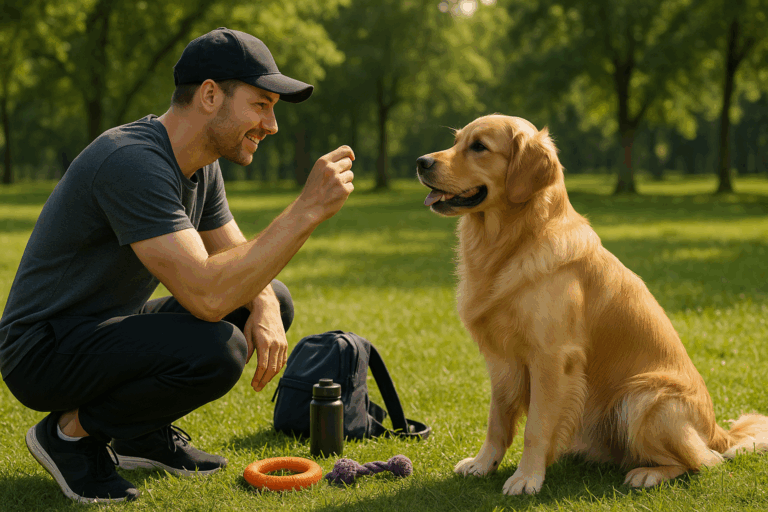🏕️ It’s not just about finding a patch of land and throwing a tent upon it, it’s about creating a temporary home away from home, a comfortable haven in the great outdoors. It’s about understanding the balance between shelter, comfort, and utility, and knowing how to achieve it. It’s a skill, a craft, an art indeed.
As an outdoor enthusiast with a background in Software Engineering, I’ve always appreciated the beauty of systematic planning and efficiency, even (or especially) when it comes to creating the perfect campsite. Just like designing a software, setting up a camp requires a good understanding of the landscape, careful planning, and thoughtful implementation.
In this comprehensive guide, we will delve into the intricacies of camp setup, discussing key elements such as selecting an ideal site, understanding the impact of weather and terrain, setting up your tent and camp kitchen, organizing your campsite for optimal comfort and utility, and more. 💡
Selecting Your Campsite: More Than Just a Pretty View
Selecting the right campsite goes beyond just picking a location with a beautiful view. It’s about understanding the impact of the surrounding environment on your camping experience. Sun exposure, wind direction, proximity to water sources, and potential hazards – these are just some of the factors that you need to consider.
Weather and Terrain: Your Invisible Camp Companions
Weather and terrain play an integral role in your camp setup. Understanding how different weather conditions affect your camping experience, and how to use the terrain to your advantage, can make the difference between an enjoyable camping trip and a miserable one. ☀️🌧️🌬️
Setting Up Your Tent: Your Portable Haven
The tent is arguably the most important component of your campsite. We will discuss the art of setting up a tent, covering topics such as the different types of tents, understanding their features, and the techniques and tips for erecting your tent securely and comfortably.
The Camp Kitchen: Nourishment in the Great Outdoors
The camp kitchen is where meals are prepared and shared, where laughter echoes and stories are told. Setting it up efficiently and safely is essential for a comfortable and enjoyable camping experience. 🍳
Organizing Your Campsite: A Place for Everything, and Everything in Its Place
Organizing your campsite is crucial for functionality and comfort. We will explore how to arrange your camp elements for optimal ease of use and comfort, and provide tips on how to maintain a clean and organized campsite.
From novices who are planning their first camping trip, to seasoned campers looking to enhance their outdoor experience, this guide offers insights and tips that will help you master the art of camp setup. So, let’s dive in, and start creating your perfect outdoor haven. 🌲
Mastering the Art of Camp Setup: Step-by-Step Guide
Setting up a campsite is a fine art that, when done properly, can turn an outdoor trip into an unforgettable experience. But how exactly do you master the art of camp setup? In this comprehensive guide, I’ll walk you through the process of creating the perfect outdoor haven, covering everything from selecting the perfect spot to setting up your tent, arranging your campsite, and maintaining a safe and comfortable environment.
Before we dive in, I encourage you to check out the video “Campsite Setup: Tips and Tricks” on the YouTube channel REI. It’s an excellent resource that offers a visual representation of some of the concepts we’ll be discussing. Now, let’s get started.
Choosing the Ideal Campsite Location
The first step in setting up a perfect campsite is choosing the right location. Not all spots are created equal – you’ll need to consider factors like safety, weather conditions, accessibility, and the natural environment. Begin by conducting an initial site assessment. Look for flat, dry ground that’s free of rocks, roots, and other potential hazards. Consider the direction of the wind and the location of the sun. A good campsite offers a balance of shade and sunlight and is protected from prevailing winds.
For more in-depth information on this, you may find it helpful to watch the video “How to Choose a Campsite” on the YouTube channel, Adventure Camping. This video does a great job of explaining the specifics of what you should look for when choosing a campsite location.
Lastly, think about proximity to resources. Your site should be near a water source, but not so close that it disrupts the natural habitat or risks contamination. The following table compares the pros and cons of some common campsite locations:
| Location | Pros | Cons |
|---|---|---|
| Forest | Shade, shelter from wind, abundant firewood | Potential for falling branches, may be insect-prone |
| Lake or River | Water source, scenic view | Risk of flooding, may attract wildlife |
| Mountain Top | Great views, cool breeze | Exposure to elements, difficult to access |
Setting Up Your Tent and Campsite
Once you’ve chosen your campsite location, it’s time to set up your tent and arrange your campsite. When setting up your tent, make sure it’s on level ground, free of sharp objects that could puncture the floor. Position the door away from prevailing winds and slightly downhill to prevent water from pooling inside. Secure it firmly to the ground using all available pegs and guy ropes.
As for the campsite arrangement, think about functionality and convenience. Create distinct areas for sleeping, cooking, and relaxing. Keep food and cooking equipment away from the sleeping area to avoid attracting animals. Also, consider the flow of traffic to prevent people from walking over sleeping areas or through the cooking zone.
For a detailed walkthrough of setting up a typical camping tent and arranging a functional campsite, take a look at the video “How to Set Up a Campsite” by ExpertVillage on YouTube. It offers valuable tips and shows you how to do it step-by-step.
Ensuring Safety and Comfort
While setting up a campsite can be an exciting activity, it’s crucial to prioritize safety and comfort. Start by checking the area for potential hazards such as dead trees, bee nests, or poison ivy. Keep your campsite clean and store food securely to avoid attracting wildlife. Remember to keep a first-aid kit handy and know the location of the nearest medical facility.
Comfort is just as important. Use camping mats or air mattresses for extra insulation and cushioning in your tent. Bring sufficient clothing and bedding to stay warm. And don’t forget to pack a comfortable chair for lounging around the campfire!
For more safety and comfort tips, I recommend watching the video “Camping Safety and Comfort Tips” on the YouTube channel IntenseAngler. It provides a comprehensive rundown of the measures you can take to ensure a safe and comfortable camping experience.
Leave No Trace: The Ethical Way to Camp
Last but not least, an integral part of mastering the art of camp setup is adhering to Leave No Trace principles. This set of guidelines aims to minimize our impact on the natural environment and preserve it for future generations. The principles include planning ahead, camping on durable surfaces, disposing of waste properly, leaving what you find, minimizing campfire impact, respecting wildlife, and being considerate of other visitors.
Understanding and following these principles is not just good camping etiquette—it’s a way of showing respect for our natural world. By doing so, we ensure that these beautiful outdoor spaces remain intact for others to enjoy in the future.
To get a more in-depth understanding of the Leave No Trace principles, you can watch the video “Leave No Trace: An Overview” on the YouTube channel, Leave No Trace Center for Outdoor Ethics. This video provides an excellent overview and practical examples of how to apply these principles during your camping trips.
With these tips and guidelines, you’re now well on your way to mastering the art of camp setup. Remember, creating the perfect outdoor haven is about more than just a well-structured campsite—it’s about respecting the environment and ensuring a safe, comfortable, and memorable camping experience.

Conclusion
In this review, we have meticulously traversed the world of software engineering, a sector that continues to burgeon, shape our world, and push the boundaries of what is technically possible. From the initial concepts and basic principles to the intricate algorithms, structures, and methodologies that define the industry, this article has aimed to deliver a comprehensive, yet accessible, guide to the field.
We kicked off the journey with a brief introduction to the history and evolution of software engineering, marking the significant milestones that have shaped its trajectory. We then delved into the foundational concepts such as algorithms, data structures, and programming languages, and how they provide the building blocks for creating intricate software systems 💻.
Next, we explored the various methodologies used in software development. Agile, Waterfall, Scrum, and Lean were among the methodologies discussed. It was a pleasure to guide you through their similarities, differences, advantages, and applications in different scenarios. We also delved into some of the trending technologies and techniques in the field, such as AI and machine learning, DevOps, and Cloud Computing ☁️.
From there, we navigated through the critical principles of software design and architecture, laying bare the tenets of creating scalable, efficient, and maintainable software systems. We also dug into the relevance and application of testing in software development. Here, unit testing, integration testing, and system testing, among others, were explored in-depth.
In our penultimate section, we covered the importance of good project management in software development. We analysed various project management tools and techniques that can make or break a software development project 🎯.
The final leg of our journey was an in-depth look at some of the pressing ethical issues in software engineering. This is a critical facet of the field, often overlooked but integral to shaping a humane technological landscape that respects privacy and promotes fairness and inclusivity.
All in all, software engineering is a vast, intricate field that requires both technical prowess and innovative thinking. As we look to the future, it is evident that the field will continue to evolve, adapt, and innovate, necessitating a commitment to continuous learning and adaptation. The world needs more software engineers who are not just technically adept, but also capable of thinking critically, ethically, and creatively about the solutions they create.
Thank you for taking the time to read this piece. Please feel free to share it on your social media platforms 📲 or drop a comment below. Let’s keep the conversation going!
Remember, knowledge shared is knowledge doubled! Keep learning, keep sharing, and keep pushing the boundaries of what is possible!
For further reading, you might want to check these articles: [Software Engineering Ethics](#), [Cloud Computing](#), [Agile Methodology](#).
Happy coding! 👩💻👨💻
[Source](#)



